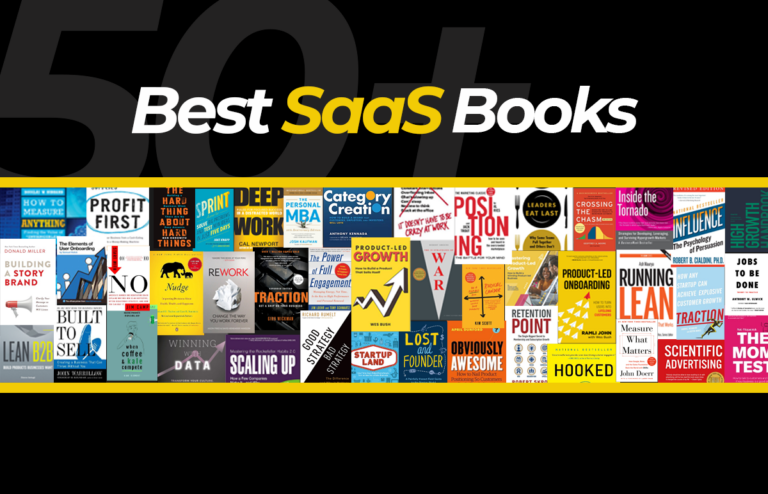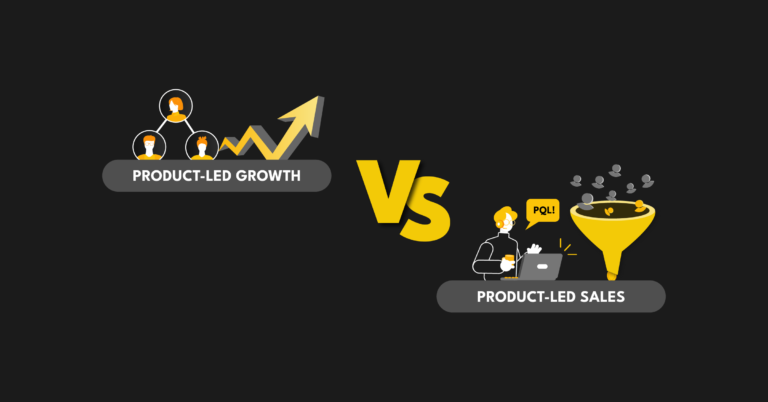Got a free trial? What about a freemium model? You need a way to assess leads based on their engagement with your product. Enter the product qualified lead.
What’s that, you ask? It’s simplicity itself. A product qualified lead is a lead that has:
- Engaged with your product
- Met a set of “Activation” criteria that you set
- Found your key features of utmost use
Before we get into PQLs and their benefits, a little history:
Lead Qualification is not new
Qualifying inbound leads is quite an old concept. For a long, long time B2B businesses (not just SaaS businesses) have been qualifying leads.
And why?
Qualified leads are more likely to convert into paying customers. By qualifying leads, a business makes their sales process more efficient (and effective). Qualified lead? Focus your sales activities there. Lead not qualified? Not likely to convert? Don’t waste resources.
Lead qualification is essential for prioritized sales activities and for maintaining an efficient and effective sales system.
MQLs, SQLs, and PQLs — oh my!
Lead qualification highlights leads that have the highest likelihood of converting to customers. This likelihood is typically determined by two vectors: firmographics and interest.
Firmographics measure the business characteristics of a lead. What’s their job title? How big is the company they’re with? What industry is it in? Where is it located? The list goes on. Qualifying on firmographics hones your sales efforts on your target customer profile. Think: If you build software for cosmetic companies with an e-commerce presence, then an automotive parts company is not a firmographically qualified lead.
Interest, on the other hand, is simplicity itself. It measures a lead’s interest in buying your product. Actions like website visits, blog posts read, white papers downloaded, etc indicate interest. Theoretically, the more a prospect does these things, the more interested they are.
Marketing Qualified Leads follow from both these vectors. They have shown an initial interest – enough to “opt-in” to some marketing initiative and meet some kind of firmographic criteria (we’re looking at you job title). These leads deserve attention but are not quite ready for a personal touch from a salesperson.
Sales Qualified Leads have moved further up the interest curve and have taken actions that justify attention from a salesperson. Typically, a SQL has visited your site several times, perused your pricing page, downloaded multiple whitepapers, or requested a demo. They want to hear from Sales.
Excellent! That should be enough, correct? Perhaps if you’re a traditional software company. But in today's world of free trials and freemium offerings, the way to qualify "interest" has changed. People have to see value in your product before they pay for it. “Interest” isn’t just a download or view — it’s how engaged a lead is with your product during a trial period.
So what makes PQLs so singular?
Remember from above, product qualified leads are leads that have:
- Engaged with your product
- Met a set of “Activation” criteria that you set
- Found your key features of utmost use
Product Qualified Leads are actually qualified. Here’s why:
1. PQLs have used your product
This one sounds obvious, but for a long time, the most qualified leads for a software product never even used the product. Traditional qualification criteria include things like downloading an e-book or visiting the pricing page — activities that imply interest in your offering. But nothing says “interested” like engaging with your features and using your product. Nothing says interested like showing interest!
2. PQLs have hit first value
Your users set up a trial so they could give your product a go. You need to give them some breathing room so they can fall in love with your singular features and insightful methodology on their own terms.
But how much breathing room? The goal of your trial (as with any trial) is to drive users and accounts toward “Activation” i.e. first value.
Think: what are the actions that a lead needs to take to hit first value in your product? Do you sell a productivity tool? Then maybe it’s things like adding a team member and creating a task. An analytics tool? Someone’s going to need to connect their data and create a few reports. Or is it something else entirely? Take some time and come up with a list of actions a lead would need to take to get to first value.
And because first value means just that — the lead has found value from using your product — you know that they’re all the more likely to keep wanting to use it.
3. PQLs already love your product (or are at least engaged with it)
Either way, you’ll know exactly how much attention to give them.
Go back to number one for a moment. It’s an obvious fact: since a PQL comes from a trial, a PQL has tried your product. And since they’ve hit “first value,” they’ve also found value in your product. Elementary!
But this is just a starting point. A truly remarkable PQL has interacted extensively with your product post-Activation. They’ve gone about their day and come back. They’ve tried other methods and found yours is the best. How do you find these “remarkable PQLs”? How do you make a spectrum of PQLs?
You need to score and rank your users based on how frequently they are using the most important parts of your product. Even better: giving context to these insights allows your sales team to act on the best leads instead of getting stuck in tables of data.
It’s simplicity itself — your sales team can’t make sense of rows and rows of event data so they won’t use it. Indeed, they’ll just chase every lead they can instead of going in order of who loves your product most.
So whether it’s love or just like, when you’ve got a PQL, you’ve got a lead that’s engaged with your product and is therefore likely to continue using it. Not just speculation on how much value someone might get out of your product.
4. PQLs transcend firmographics
Firmographics are great for qualifying leads. That is, until you have something better. They tell you how close someone is to your target persona — that information is of the utmost use, correct? Hold on. The reason for creating a firmographic profile is to identify and target prospects that will get value from your product.
So if a company finds value in your product regardless of the firmographic criteria, isn’t that better? Does it matter how close they are to your target persona? Agreed, they need the budget to make a purchase, but what other firmographic criteria is better than actual engagement? (Clue: there isn’t one.)
The point: if they don’t/can’t get value from your product during a trial, they likely don’t meet your firmographic criteria anyway. (Or you need to revisit your target persona.) Engagement trumps firmographic criteria.
5. PQLs are account-based
Traditionally, MQLs and SQLs have been very user-focused but SaaS is an account-based world. A curious thing, that. You’re not selling software to individuals — you’re selling to teams, to organizations. To entire accounts. That means tracking product engagement at a user-level isn’t going to tell you what you need. You need to be able to aggregate this engagement data at the account level. Without this ability, your sales team will have too many random data points to be able to understand which accounts to go after. Your PQL process will become more frustrating than helpful and your sales team will likely abandon it. Not good.
6. PQLs are based on real user engagement, not vanity metrics
Say it with me: Silos suck. Your SaaS business has one goal — to drive revenue. (Well, it probably has other goals but you’re not going to save the llamas of the world if you can’t stay afloat.) Why are all your teams focusing on different goals, then? Why do they all have different KPIs? Why aren’t they aligned?
MQLs and SQLs don’t take the entire organization into account. They’re leads in the door that serve as nothing more than an excuse to ring a gong and move on to the next one. In many cases, they are churn waiting to happen.
PQLs are not vanity-metric qualified leads. They are success qualified leads. In SaaS, a closed deal is just the beginning of the journey. A sales team can often convince naive customers to buy a product (and given commission-based compensation models, often do). That doesn’t work long-term though. You need a product your entire organization can rally behind — marketing with messaging, sales with outreach, and product with features, all in alignment. You need to qualify leads based on engagement so you’re bringing in the best possible customers for your business — not just for one team.
All this boils down to one point: PQLs are more likely to be long-term successful customers.
Early success with a product (like during a trial period) is the best indicator of long-term success with a product. If a new account is able to get set up, invite their teammates, and show sustainable engagement early during a trial, then they’re the type of account that’s just a future upsell waiting to happen.
Don’t take our word for it. Learn how to set up your own product engagement scoring system and see for yourself — PQLs are bigger and better than MQLs for SaaS revenue.












